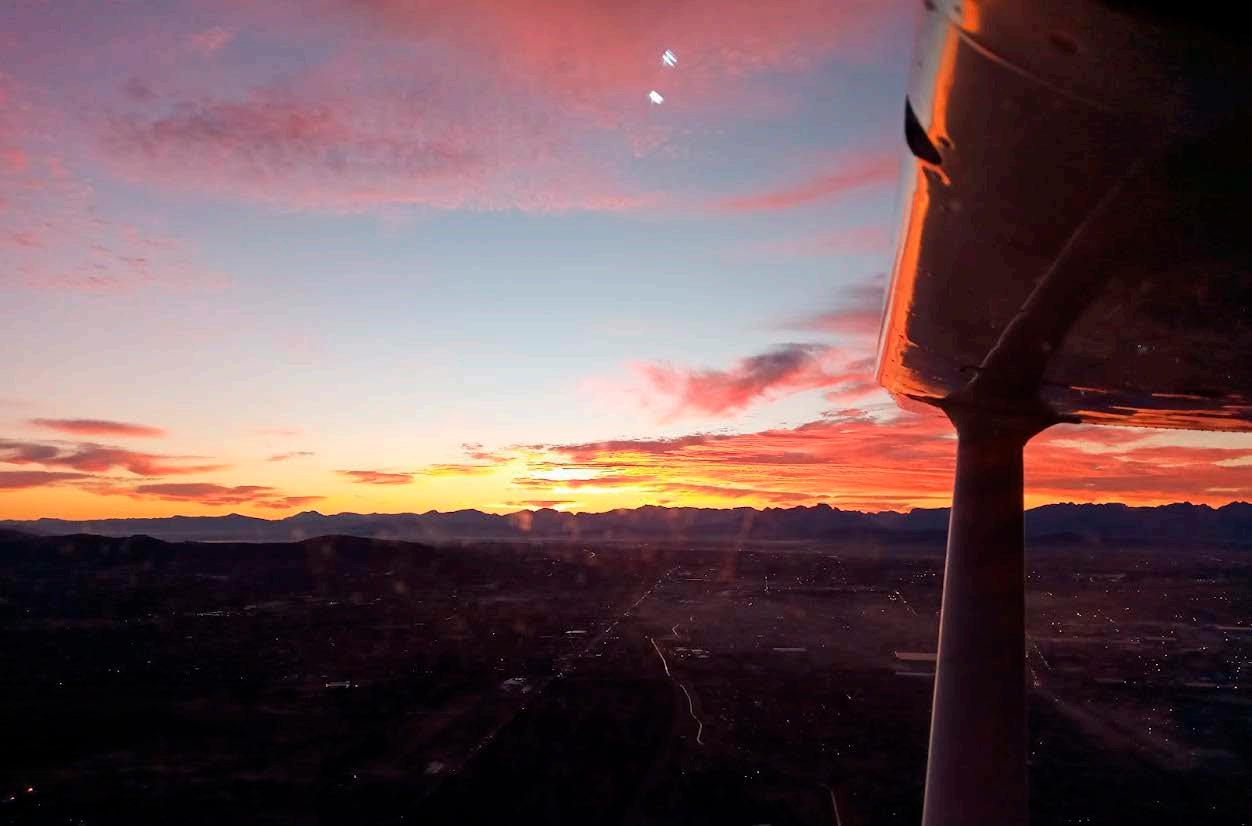
4 minute read
THE MORNING HOP
Sometimes it’s the most straightforward flights that throw a curve-ball when all you wanted was an easy trip from A to B. I mean, how hard can a 25nm hop be?
IT WAS ABOUT SIX AM and still dark on a chilly winter’s morning as I shuffled towards the Cessna 172 parked at Cape Town International Airport. The 172 was a gloomy sight on the deserted GA apron and my mood this morning was somewhat less enthusiastic than it had been last night.
I had taken the 172 for a night cross-country to build the requisite 5 night PIC hours for the CPL. Departing Morningstar just before official day ended (15 minutes after sunset), I had flown to Saldanha for a touch-and-go, before heading home again – well, almost home: Since Morningstar had no runway lights, the next best place to set down for the night was Cape Town. Which brought me here the next morning to fly the plane back to Morningstar where it lived. About 20 minutes’ flying.
On a tight budget, I had made a point of making each hour count. And until I reached 5 night hours, I decided to make use of these repositioning flights and do them at night also. After a cross-country, I would arrive at Cape Town early the next morning to take-off in the dark. Through careful timing, I aimed to arrive overhead Morningstar just after official night ended. Of the three times I attempted this, it went to plan once as there was often some delay in taking off.
It also meant an early start with a preflight outside in the coldest hour of the morning. So, after last night’s excitement, a bleary-eyed me emerged from between the dark hangars and headed towards the plane for what I hoped would be a calm and easy flight home.

The morning gloom put a damper on my previously upbeat mood.
After the preflight I jumped in, shut the door, and manipulated my frozen fingers into dialling the met office for a weather update. I was already aware that a cold front was on a collision-course with the Cape and was scheduled to hit later that day. For the next few days Cape Town would be lashed with enough rain to wash the paint off the 172 if it was left out here on the apron. So getting it home in a timely manner was high on the to-do list. The initial forecast for this morning had been relatively clear, but even now, as I waited for the met office to pick up, I could see clouds scurrying low overhead.
The news wasn’t good. My vision of a pictureperfect flight slowly vanished as I listened to the diagnosis. Cloud bases at 1200ft, forecast to start lifting only once the sunrise warmed things up. That left me here in the dark metal fridge for at least another hour to hurry up and wait.
One boring hour dragged by and finally Cape Town and the surrounding areas turned VMC. But with temperatures still dawdling in the single digits, the plane’s windows were glittering with condensation and I couldn’t see out. That meant another venture into the cold to clean them off before I could light the fires.


Everything was bathed in purple light, but 'the moment' was short lived.
Now with a wet sleeve, I jumped back in and turned the key. The prop heaved over a few times before struggling to life. It seemed this plane also didn’t like being woken up early.
With official night officially gone, I lined up on Runway 01 and took off.
I turned left-out to the west, climbing to 1500ft, and exited the CTR. Sure enough, the cloud base had lifted more than enough and I turned north towards Bloubergstrand to follow the coast. Already one half of the sky was orange, and as I trundled along the coast, I found myself flying through a sky of constantly transitioning colours. Overcoming my ‘morning grumpiness’, I felt almost lucky to have been delayed to see this.
'The moment' died shortly after reaching Bloubergstrand and turning inland towards Morningstar. I spotted the airfield ahead, and on the other side of it, by a few miles, a puffy duvet of low cloud spreading out to the east.
I aimed the nose directly at Morningstar and opened the throttle a little more. Two minutes later as I got closer, so did the blanket. An easterly wind was blowing it towards the airfield. I weighed my options: Most of the airfields to the east would also be covered, except for Stellenbosch. Cape Town was definitely in the clear, so if Morningstar got socked in, that’s where I’d go.
But I needed to get to Morningstar – and it was still open. A few minutes later I felt the reassuring thump of the wheels against Morningstar’s runway and taxied over to the hangars where the 172 lived. After I packed the plane away, a sheet of cloud drifted over the tops of the hangars and swallowed up the runway. The irony was that I had taken off from Cape Town an hour late, yet landed just in time.
With the knowledge that the plane was asleep, snug in its hangar, I listened to the rain drumming on the roof at home that afternoon. I realised that even though these repositioning flights were just ‘on the side’ when compared to the night-navs, it didn’t matter at all how short they were: Every flight is made up of thousands of variables that produce innumerable combinations of factors that affect both pilot and aircraft. And so I could never afford to be ‘familiar’ – especially when every flight carries the same potential for the unplanned.

After an hour's delay, I landed 10 minutes before the weather arrived.










